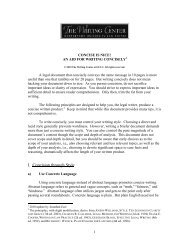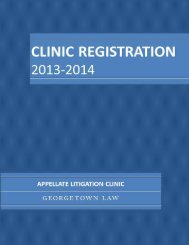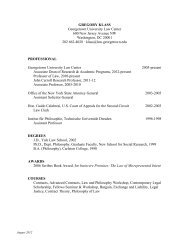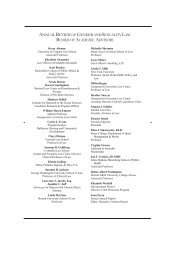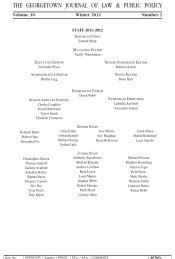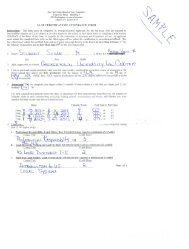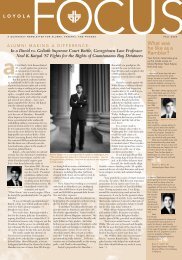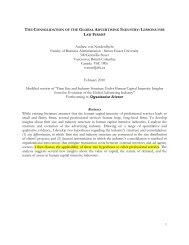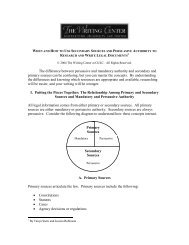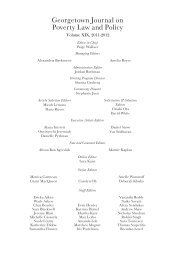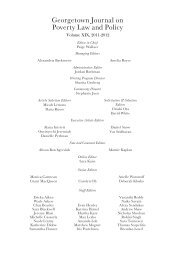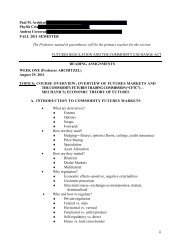Date: April 12, 2013 Topic: The Shrinking ... - Georgetown Law
Date: April 12, 2013 Topic: The Shrinking ... - Georgetown Law
Date: April 12, 2013 Topic: The Shrinking ... - Georgetown Law
Create successful ePaper yourself
Turn your PDF publications into a flip-book with our unique Google optimized e-Paper software.
al., 2009), plural sourcing (Bradach, 1997; Gulati et al., 2006; Heide, 2003; Jacobides et al.,<br />
2006), or taper integration (Harrigan, 1986; Rothaermel et al., 2006). In contrast to a TCE or<br />
RBV logic, firms are often found to both make and buy the same input.<br />
<strong>The</strong>re is robust theory and evidence on the conditions under which plural sourcing is<br />
likely to occur. For example, Parmigiani (2007) demonstrates that greater overlap between<br />
the firm’s and the supplier’s expertise increases the likelihood of plural sourcing while<br />
Parmigiani et al. (2009) explain that firms may make and buy sets of complementary<br />
components. Performance uncertainty and information asymmetry between buyers and<br />
suppliers (Dutta et al., 1995; Heide, 2003), technological volatility (Krzeminska et al.,<br />
forthcoming), and complementarities in incentives or knowledge (Puranam et al.,<br />
forthcoming) can also lead to plural sourcing.<br />
While important in identifying the prevalence of plural sourcing, this research has<br />
provided limited guidance on a logical follow-on question, that is, how to explain the mix of<br />
internal and external sourcing (Parmigiani, 2007:306; Puranam et al., forthcoming).<br />
Assuming that a firm does indeed both make and buy, why would it choose 80% make vs.<br />
20% buy as opposed to 40% make vs. 60% buy? Thus, given the presence of preconditions<br />
for plural sourcing, how do firms decide how much to make and how much to buy?<br />
In addition, the literature does not explore the selection of suppliers and their impact<br />
on the design of plural sourcing strategies. For example, if a firm decides to buy 40% for a<br />
given product or service, this 40% could be outsourced to a single firm or multiple firms.<br />
Existing theory assumes the decisions on the make-buy balance and supplier selection to be<br />
independent of each other. This is despite the fact that behind the ‘façade of the market’ lies<br />
another firm, with its own capabilities and contractual relationship with the focal firm<br />
(Jacobides et al., 2005). To the extent that supplier selection influences the cost of<br />
contracting, it would have an impact on the make-and-buy decision.<br />
3



